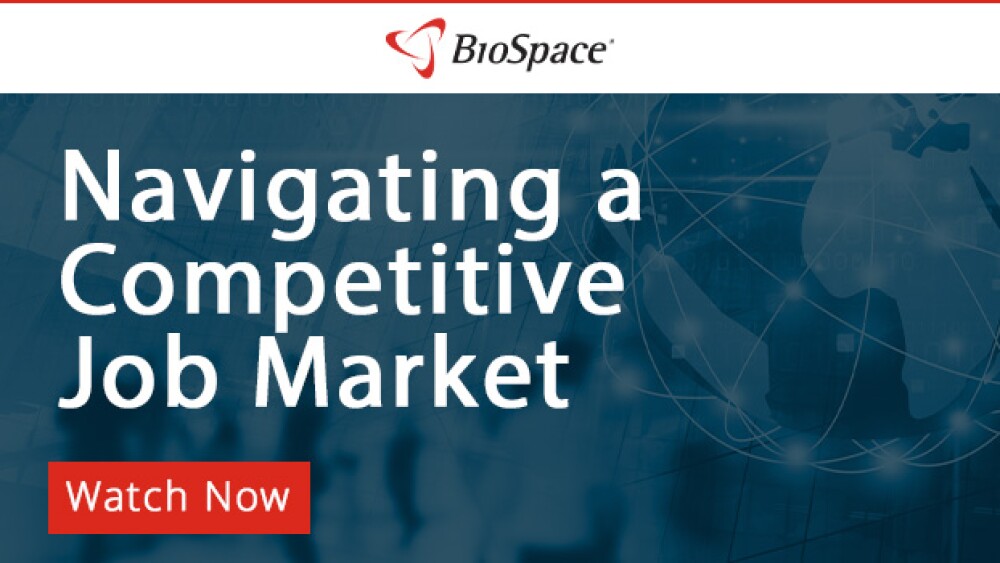Student Resources
To help you land your first post-university role, BioSpace has compiled this job search toolkit just for you. You’ll find tips as well as links to helpful articles and resources, including our newsletters and podcasts.
Craft Your Resume
When creating or updating your resume, consider how to share not only your accomplishments, internships and previous jobs but also your skills. It’s also important to customize your resume to each job rather than use the same one for every application. Last, think about how AI tools such as TopResume and ChatGPT can help you generate or build out your resume. For more tips and insights, check out these articles.
Depending on their needs, candidates can choose among tools such as AI-powered resume generators, professional coaches and university career services to hone their applications.
Plus, tips on applying to multiple jobs at the same company, making new work friends, and how to ask for more time at the offer stage.
Newer hiring models based on skills applicants have learned and their general potential for growth could avoid the drawbacks of relying on degrees and experience.
Draft Your Cover Letter
Some experts feel cover letters are unnecessary, and you should only provide one if an employer requests it. Others feel you should always submit one. Should you decide to create a cover letter, customize it for the job you’re applying for, address it to a named individual if possible and keep it brief. Get more tips in these articles.
A cover letter is an important part of any job application, but for those in the life sciences it is especially important. Find tips for writing a scientist cover letter as well as an outline and examples in our guide.
To help you in your job search, we’ve compiled a list of cover letter do’s and don’ts.
This article offers a template with examples of an effective cover letter for a research scientist job. Let’s explore some tips to help you write your own.
Webinar
Join us in this discussion on how you can optimize your chances of landing a new role despite a highly competitive job market.
Expand Your Network
Now is a terrific time to build up your network. This includes connecting with people on LinkedIn. As a student, you can look for people who have titles you might apply for, as they’ll be your peers and could provide great insights as you move into your post-graduation jobs. Remember to also build relationships with people in person, such as through internships or at events. For more tips and insights, check out these articles.
Even if you aren’t looking for a new role in biopharma, nurturing relationships will only benefit you in the long run. To help, here is a complete guide to networking in the life science industry.
Research Target Employers
One of your first steps should be researching the employers that interest you most. Your targeted job search should start with a list of about 40 employers that you’ll narrow down later. Your initial criteria should include a specific geographic area, industry sector of life sciences and job function/title. Get more tips in these articles.
The more you funnel the universe of employers into a laser-focused, precise, narrow segment of those who would love to hire you, the more successful you’ll be.
A successful targeted job search is not a scattershot approach like my spammer’s. It is narrowly focused on a finite list of employers that you’ve generated and qualified.
Why should you research prospective employers as you approach your life sciences job search?
Ace Your Interview
Your job interview is your chance to shine, so it’s important to prepare for it. Preparation includes not only researching the company and seeing how your skills align with the job description but also developing anecdotes that show how you’ve applied those skills on projects and the results you achieved. For more tips and insights, check out these articles.
Preparation is key to ensuring one stands out in an increasingly competitive job market. We asked an expert for tips.
Build Your Social Media Brand
Now more than ever, you need to think strategically about your social media presence. Employers can easily see what you share online, so keep that in mind when you’re posting on your favorite social platforms. In addition, pay special attention to LinkedIn, as having a strong profile, connecting with others in life sciences and participating in industry-specific groups can get you noticed by prospective employers. Get more tips in these articles.
Scientists must act differently than other professionals to build a successful personal brand on social media. Check out our comprehensive guide to get started.
Professionals have unprecedented opportunities today to become known, and the biggest opportunity comes from building an online presence.
Companies will look at job candidates’ LinkedIn profiles, so make sure yours is strong, from the summary of your expertise and qualifications to testimonials from colleagues.
Latest Podcasts
Unravel the business of science with BioSpace. Keep up with what’s happening in biotech with our latest episodes.






















